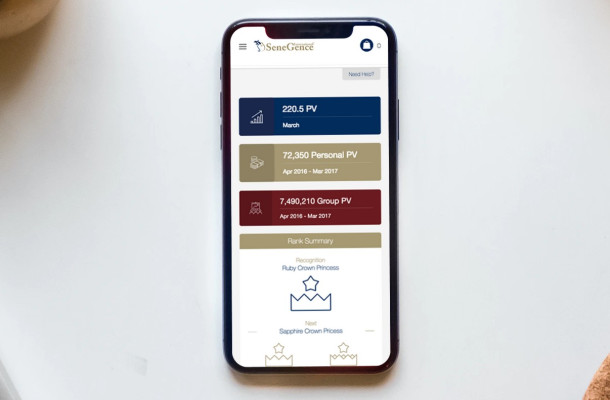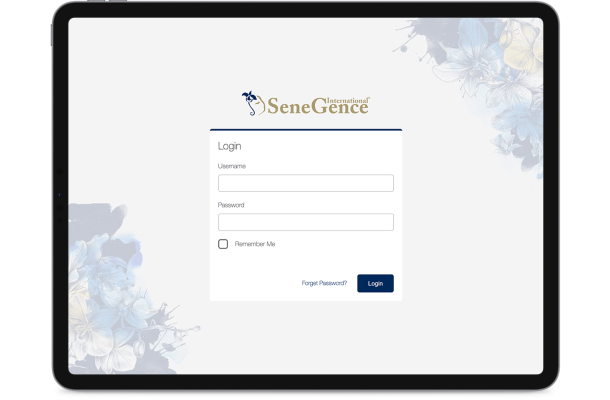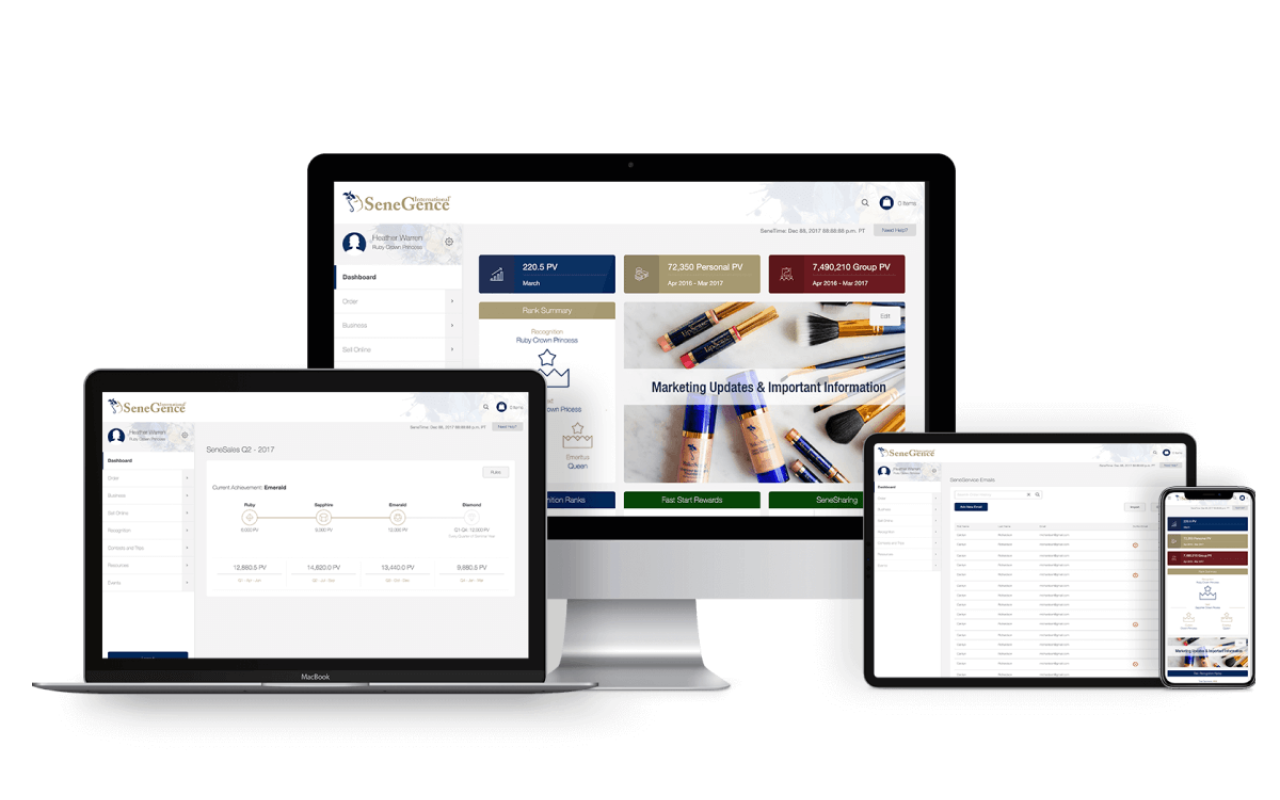The Brief
Founded in 1999, SeneGence is a multi-level makeup and cosmetic manufacturer most commonly known for its product, LipSense. Despite their focus on appearance, however, it wasn’t long ago that SeneGence’s sales system was an unsightly mess. It all started with the best kind of problem: growth.
Just how much growth? From 2016 to 2018, the number of SeneGence distributors skyrocketed from 50,000 to 500,000—that’s 10 times more distributors in just two years. Obviously, the old distributor sites could not keep up with the new workload. SeneGence needed new tools to support their distributors, and they needed them to integrate seamlessly with multiple back-end legacy systems.


The Solution
Facing this growth explosion, SeneGence came to SolutionStream looking for help. Their site was slow and made it difficult for distributors to manage their business and sell SeneGence products. On top of this, SeneGence was expanding into new markets, and they needed something that could satisfy users across the globe.
Even though time was not on our side, we knew that finding the right solution the first time would save everyone a lot of difficulty in the long run. So, we pulled back and started with research and testing. Going right to the source, we interviewed different distributors about their current frustrations and most desired features. Their feedback proved invaluable in shaping our solutions for the business management and sales sites.
First, we tackled the distributor’s business management system. We did interface tests using Jasmine and Karma, conducted rigorous quality assurance processes, and even ran a beta test with users. The end product was a hyper-focused dashboard that showed distributors the most relevant data first. We also cleaned up the navigation and modernized the design to make it more approachable.
Just as we started closing in on a functional release, however, we were hit by an unexpected change. Due to SeneGence’s incredible growth, they required that we build our system to handle significantly more concurrent users than we originally planned. To tackle this, we simulated users hitting the site using Azure’s load-testing tools. This allowed us to simulate thousands of order and checkout processes and helped us pinpoint areas in our code that needed adjusting, as well as configure our servers to scale during moments of high traffic.
SeneGence’s site was old and complicated. They needed a complete, functional and visual overhaul.
The Impact
Once the management tools were in place, we moved on to the distributor sales site. The problem here was that SeneGence’s site had become so outdated and dysfunctional that many distributors had abandoned it, instead creating their own website to sell products. As our goal wasn’t just to increase sales, but also to improve the adoption rate of the sales site, we took distributor feedback in stride, developing additional features as they recommended.
Despite the setbacks, we were able to deliver on all accounts, in large part because we listened to our target and involved them in the development process. Now, even if SeneGence decides to add another half million distributors, they have the tools and infrastructure to handle it.
